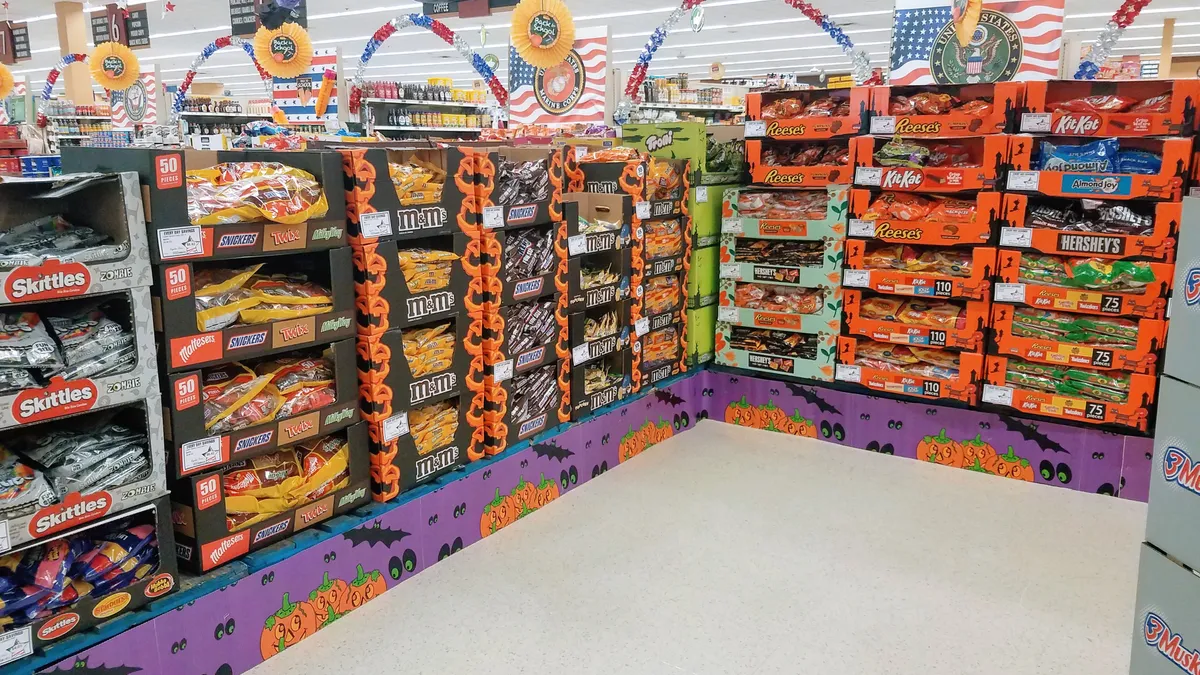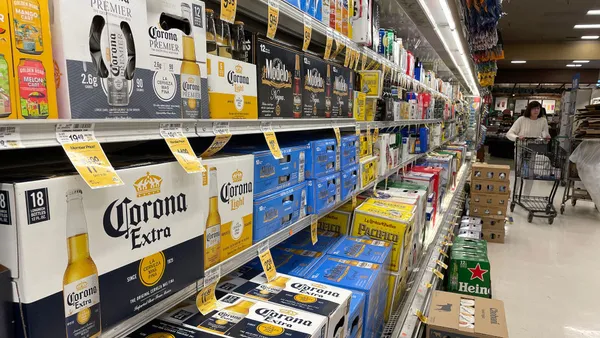Dive Brief:
- Halloween chocolate and candy sales are up 8.6% as of Oct. 4 compared to last year, according to IRI sales data cited by the National Confectioners Association. Halloween chocolate sales are up 12.2%.
- The association found these elevated sales numbers correspond to an overwhelming sentiment from 90% of young parents say they cannot imagine Halloween without chocolate and candy. About 96% of parents plan to celebrate Halloween in some form this year.
- Candy sales have been rising throughout the year as consumers have turned to sweet treats during the pandemic. Since March 15, data from the National Confectioners Association show that U.S. candy sales are up 4.3%.
Dive Insight:
Halloween this year may not be as scary as manufacturers predicted. This data showing heightened sweet sales is supported by independent data from a variety of candy manufacturers. Hershey said earlier this month retail sales were 19% higher compared to a year ago through the end of September. At Ferrero, sales were up 15% so far, while Mars Wrigley categorized the season as "strong."
Following waves of lockdowns and an upended world economy, cravings have played a significant role in purchase decisions. Several reports have shown an uptick in sales of what is traditionally considered junk food, as well as chocolate and candy. Mondelez International data from April showed 25% of consumers indulged in chocolate, and earlier data from the National Confectioners Association found overall sales of chocolate and candy increased 3.8% between March 15 and Aug. 9 of this year.
For manufacturers, Halloween represents the largest candy selling holiday on the calendar and a significant portion of income. To protect that, major candy companies like Mars Wrigley, Hershey and Ferrero have adapted their strategies on packaging, selling and marketing their sweets to cater to consumers during this season of uncertainty. From placing seasonal candy offerings on shelves a few weeks in advance to updating product mixes and selling smaller-sized bags to meet increased demand for at-home occasions, candy manufacturers have worked to meet the needs of consumers during COVID-19.
The approach to Halloween 2020 appears to have grabbed consumers’ attention. Data company Numerator took an early read on in-store Halloween candy sales month-to-date through Sept. 20 and found sales were up 26% versus the prior year.
Besides a change in how candy is consumed, there is also a clear indication that chocolate is a winning option with consumers. Chocolate sales are up 5.7% since March 15, compared to a 2% increase in non-chocolate candy sales, according to the National Confectioners Association data. The chocolate trend has grown throughout the pandemic, and candy companies are responding with their product offerings for Halloween. Hershey produced more of its popular assortment and snack size bags, featuring Reese's, Hershey’s, Kit Kat and variety brands, which have all seen sales surge during the pandemic.
While not everyone will participate in Halloween this year, the National Retail Federation found that people who will are spending more money than they did last year. On average, the trade association found consumers participating in Halloween expect to spend $92.12, about $6 more than last year.
Increased overall budgets from Halloween participants could correct some of the gap left by shoppers who will not participate in 2020. Similarly, candy companies can still benefit from higher prices. Last year, IHS Markit estimated candy prices rose 3.9% from 2018, a substantial increase from the 1.6% jump between 2017 and 2018 that followed depressed prices in 2016 and 2017.
Still, this season could have plenty of tricks left up its sleeve in the final days before Halloween. As the holiday represents 13% of the estimated $36 billion in U.S. sales posted annually in the category, the results from this upcoming weekend will have a role in setting the tone for the upcoming winter holiday season — with products already appearing in stores now.













